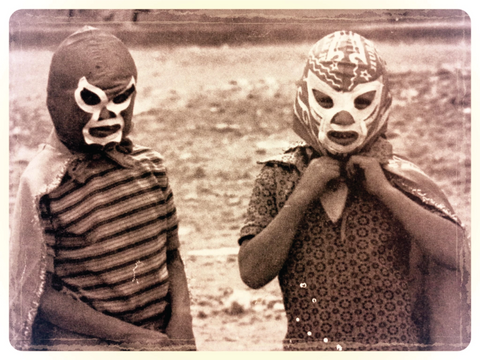Recently, we gave you guys the rundown on how professional wrestling evolved through the years as a sport. In that article, we mostly focused on American wrestling, but there’s a lot more out there than just the WWE. In fact, our geographical neighbors have one of the most interesting wrestling scenes in the world. In Mexico, wrestling was adopted in the early 20th century, and has since become a cultural phenomenon all its own known as “Lucha Libre.” Translating to “free fight,” the lucha libre marries some of wrestling’s most recognizable features with Mexican culture in a way that makes it all their own. Some of the tropes that were brought about by lucha libre have even worked their way into wrestling worldwide.

While the lucha libre didn’t take off as a cultural event until the 1930’s, earlier forms of the sport have existed in Mexico since the 1800s. Around the time of the Second French Intervention in Mexico, Enrique Ugartechea modernized traditional Greco-Roman wrestling and became the first Mexican wrestler. From there, it evolved in a similar fashion to that of American wrestling, with small local scenes. Everything changed in 1933, when Salvador Lutteroth founded the Empresa Mexicana de Lucha Libre (Mexican Wrestling Enterprise), and brought the lucha libre to the national stage. In the 1950s, Lutteroth brought his matches to television, where stars like El Santo and Gory Guerrero cemented their place in Mexican pop culture.


One of the main differences in the lucha libre compared to U.S. wrestling is in the showmanship. Where American wrestling became increasingly about brute strength, luchadores (Mexican wrestlers) focus on agility and aerodynamics. As the sport evolved in Mexico, luchadores would use the ropes to launch themselves towards their opponent. These theatrical takedowns originated in the lucha libre, but can be found in nearly any facet of entertainment wrestling. Another staple of the lucha libre is tag-team matches, when a team of three or more luchadores take on a rival team in the ring. For context, American wrestling rarely had more than four wrestlers in the ring during a tag-team, whereas a lucha libre match could have at least six.


Perhaps the most recognizable aspect of lucha libre showmanship however, are the masks. Inspired by culture dating all the way back to the Aztecs, these masks are rooted in Mexican history. At first they were simple, but as the sport evolved, masks have become far more elaborate, and each luchador mask reflects the persona of the wearer. A mask can represent different animals, gods, heroes, and so much more. Wrestling is all about creating overblown personalities on top of the fighting skills, and luchadores don’t reveal their true identity, so really it’s all about the persona. This is where the masks come in, to keep the identity of each luchador a secret. Some luchadors will even wear their masks everywhere they go to stay in character and keep the mystery of their identity alive. If it wasn’t already obvious, these masks are integral to the luchadores, and losing one to an opponent in the ring is a massive disgrace. That being said, some will voluntarily remove their masks at retirement, or when changing it for a rebrand.


As much as we love American professional wrestling, the lucha libre deserves a shout-out due to its unique cultural impact. Luchadores and their now iconic masks have become synonymous with Mexican culture, and can be seen proudly in works from well regarded Mexican artists like Francisco Delgado. Having broken down the origins and characteristics of the lucha libre, it should be clear that it’s more than just “Mexican wrestling” — it’s a proud declaration of stagecraft and Mexican culture in a league of its own.





